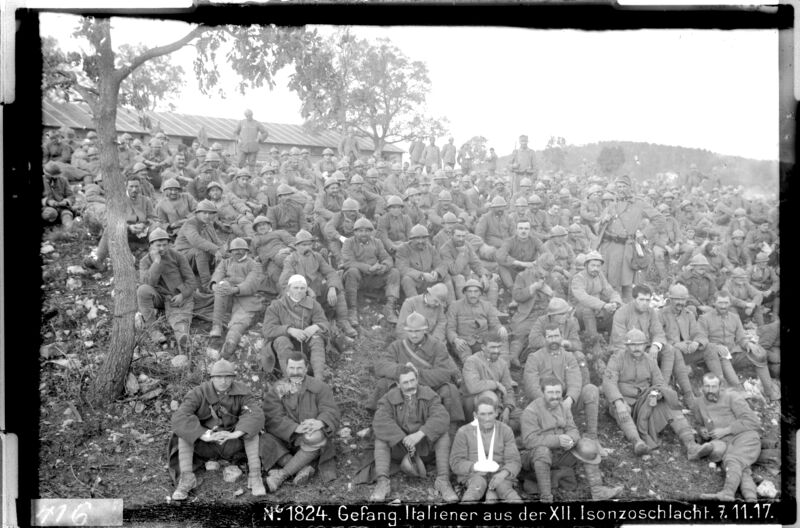
It is hard enough to imagine industrialized warfare taking place along the Soca/Isonzo, but the type of fighting that occurred is just as difficult to comprehend. The Italian version of the river’s name, Isonzo, has been given to the catastrophic battles fought in the area from May 1915 until November 1917 on a front that stretched along the Soca River, in western historiography they are known as the Twelve Battles of the Isonzo. Tragically, the Soca was also synonymous with the bloody battles that occurred in northeastern Italy during the war. I would not disagree with that assessment. The Soca River’s trance inducing turquoise waters were said by some to be the most beautiful in all of Europe. The fact that ferocious battles had been fought amid this magnificent landscape was difficult to grasp. Those seven thousand soldiers buried in an ossuary surrounded by such incredible natural beauty was a sublime paradox. The soldier’s remains had been moved to it from nearby Army cemeteries, in this case some things are better left alone. I doubt that was what the architect had in mind since the Charnel House was built to honor the dead. Owing to the material used for its construction and the dramatic scale, it felt sterile and lifeless. The architecture may have been designed with reverence in mind, but for me it acted as a barrier. This added to the uneasiness I felt as I walked around it. The complex holds the remains of 7,014 Italian Soldiers, both known and unknown. The Charnel House’s symmetry, austere exterior and penetrating silence had the effect of making it seem devoid of life. Anthony’s Church, which was built on the hill in the late 17 th century. Octagonal in shape, its core consists of three concentric circles that narrow and get smaller as they rise. At a distance it looked spectacular, closeup it felt more like what it was, a monument to death constructed around a monument to eternal life. Because it was set on Gradic Hill, the Charnel House stood above the town. At the time, we were the only ones on-site. Despite beautiful weather, it felt weird and gloomy. I would prefer not to repeat the experience. The Italian Charnel House was the first ossuary I have ever visited. Nevertheless, they did it with open minds and genuine curiosity. I cannot imagine many people, let alone two Slovene women in their 20’s would choose to visit the grounds of a Charnel House. My Slovene companions never ceased to amaze me, they wanted to make sure I had the best experience possible. The two Darja’s, little Alex and myself set off first for the Italian Charnel House.

The setting is enhanced by the mountains which tower in the near distance.


The river has been termed by some as the most beautiful in Europe. The trail first goes up to the Italian Charnel House, then stays close to the Soca River. The trail is not only about what happened in this area during World War I, it also takes in a wealth of natural and cultural sites. Just outside the museum begins a five kilometer trail known as the Kobarid Historical Walk, the name is something of a misnomer.

The inhospitable terrain has acted to preserve these remnants of war. Many of the old lines of fortification still exist, sprawling in the valleys. To strip the veneer of glory from war, one should get as close as possible to where battle occurred. Nothing beats a visit to the actual sites where the fighting occurred. The museum had a wealth of artifacts and world class exhibits, but for the curious this was just the beginning. The Kobarid Museum was a beginning rather than an end for accessing the history of World War I on the Italian Front.


 0 kommentar(er)
0 kommentar(er)
